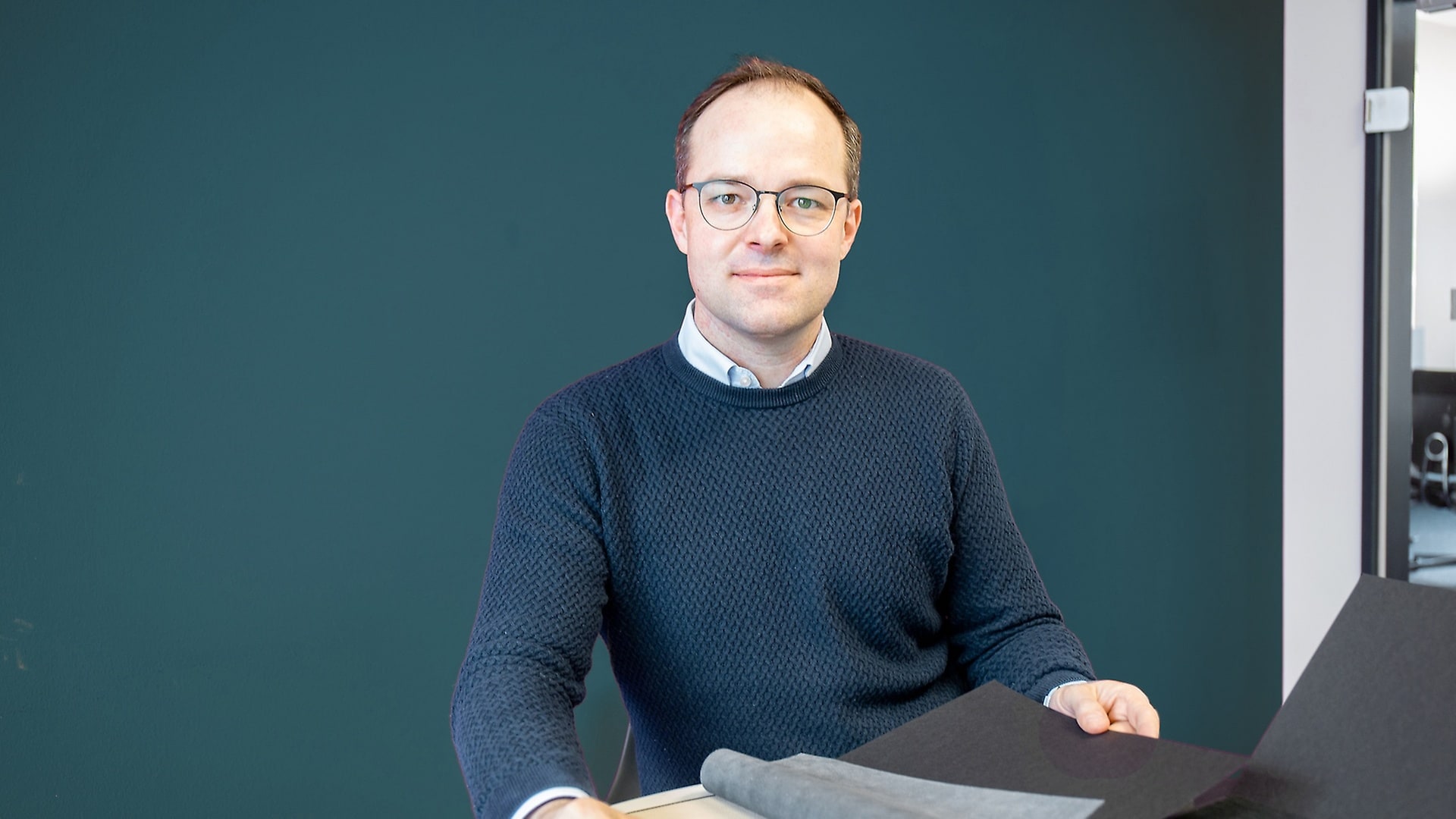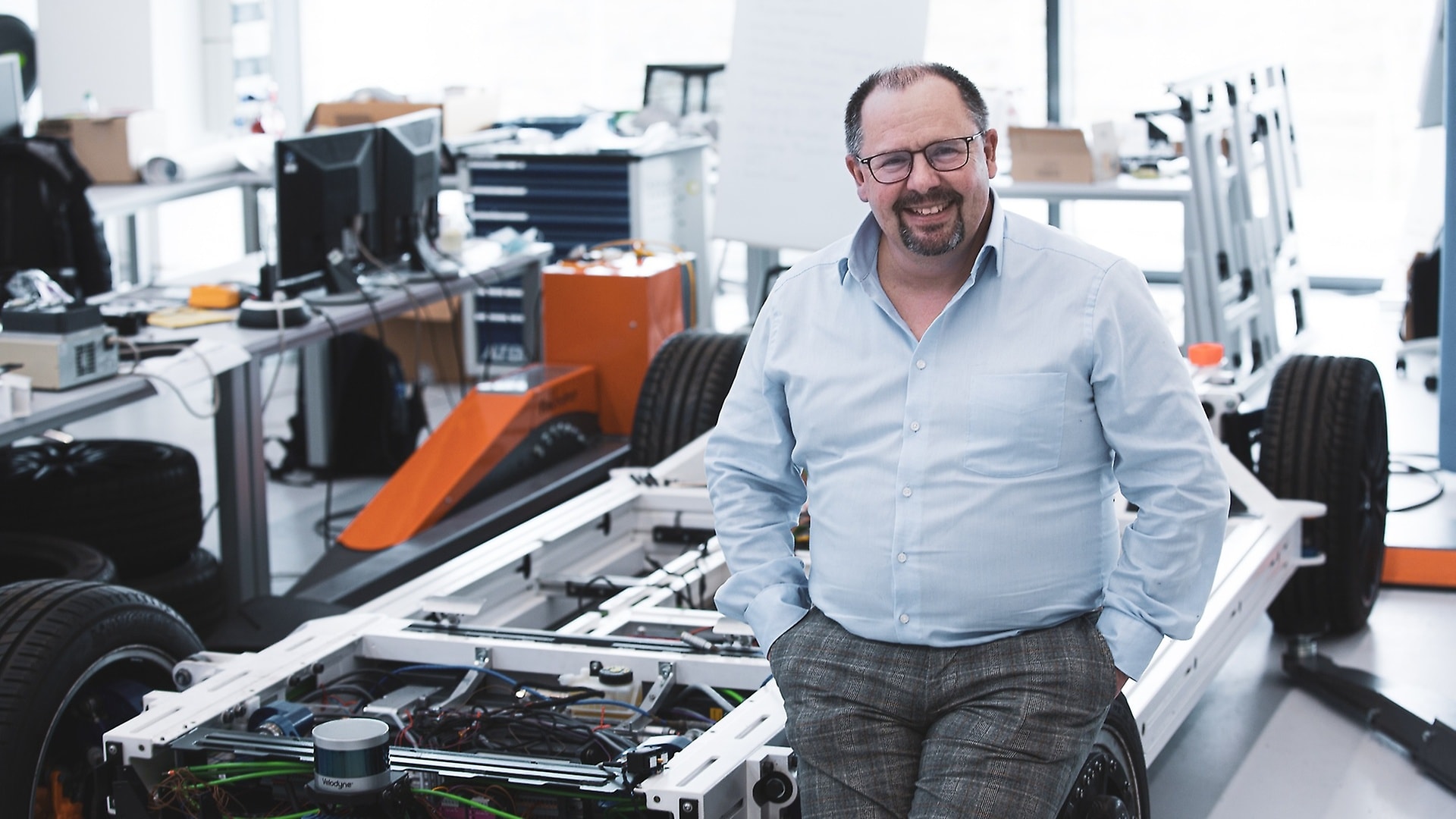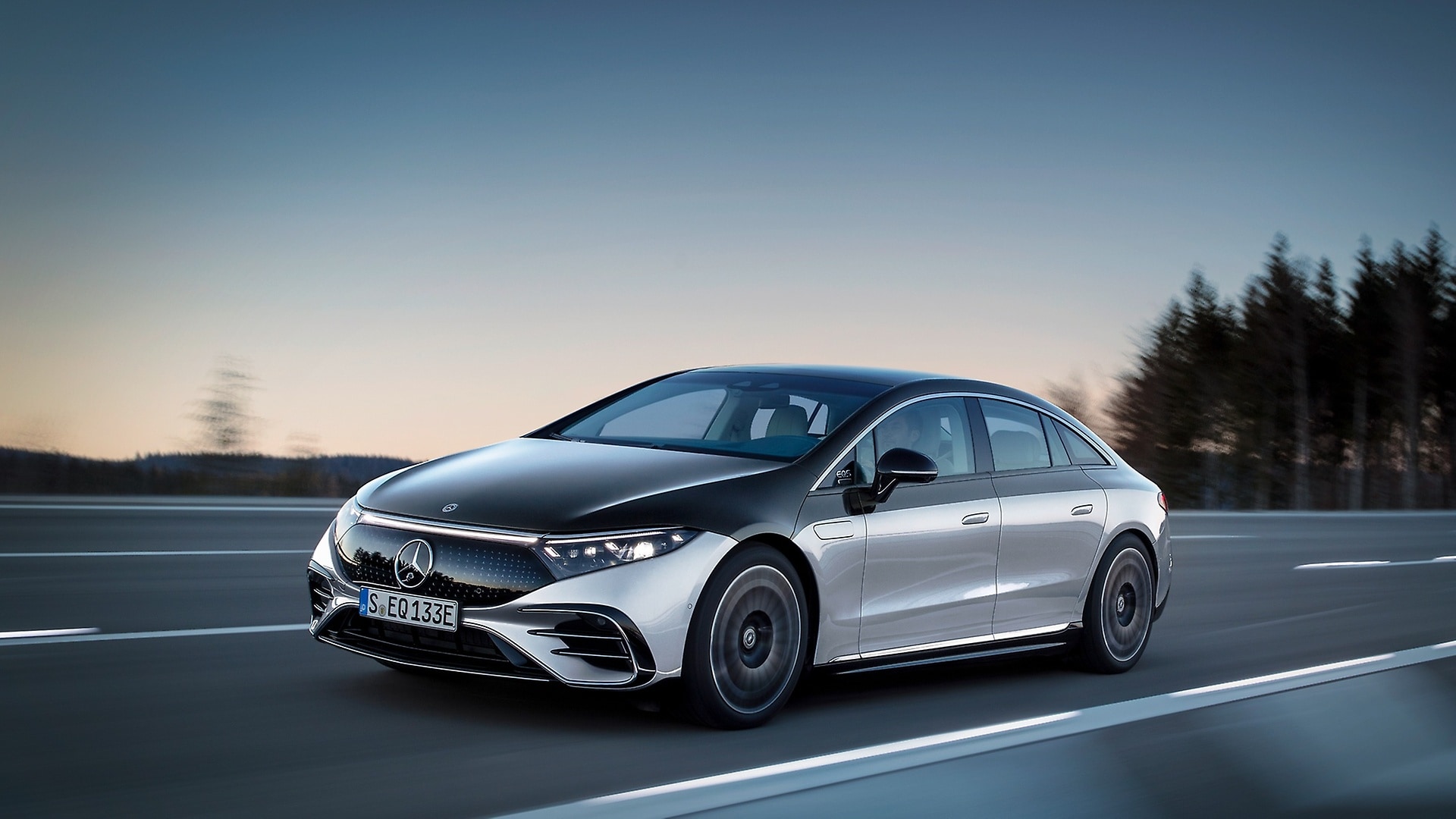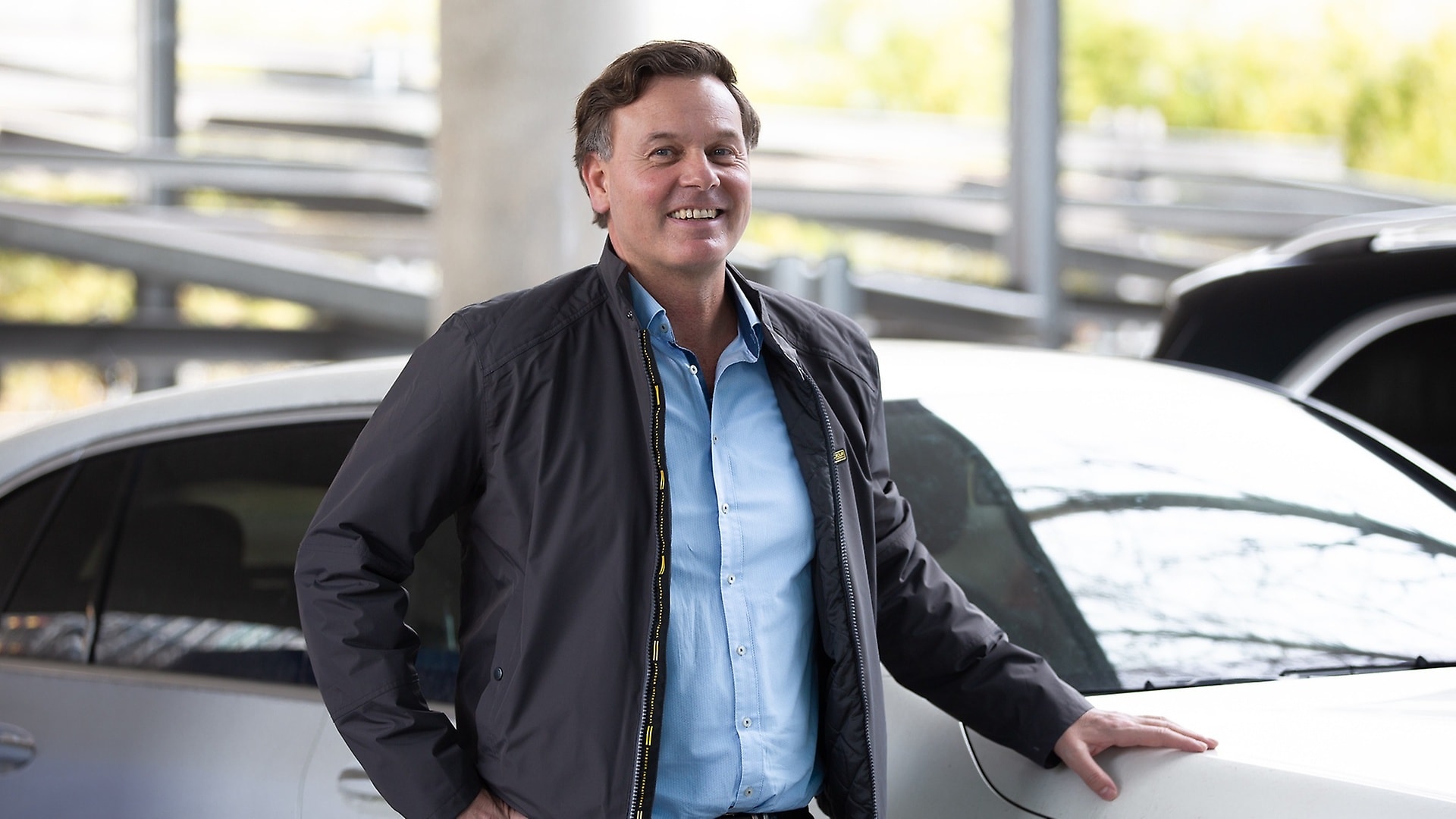April 29, 2021 – The intention is clear: Mercedes-Benz aims to have a CO₂-neutral fleet of new passenger cars by 2039 at the latest. To achieve this, a lot depends on product development. Across the company, people are committed to taking into account the issue of sustainability as early as possible during the development of the vehicles. We spoke to some of them and discovered that there are many facets to sustainable product development.
When Daniel Fuhrmann tests a leather sample for future interiors at Mercedes-Benz, he holds a small sensation in his hands: the 'leather' of the future is not of animal origin, but instead a metabolic product of bacterial and yeast cultures that is produced during the fermentation of carbohydrates. "Materials made from bacterial nano-cellulose or based on fungal mycelia can have the look and feel of leather. However, they are much more resource-efficient in production, non-animal and biodegradable. In addition, colour, thickness, shape and feel can already be influenced during the growth process," explains Fuhrmann, who, as head of "Future Inside Systems" in Böblingen, deals with future technologies for a sustainable vehicle interior, among other things. "We try to think holistically when developing a product, in terms both of CO₂ emissions and resource consumption. Sustainability provides the foundation for vehicle development."
Daniel Fuhrmann and his colleagues pursue a strategy, which decouples economic growth from resource consumption or environmental impacts. "This means we want to continue to grow, yet still reduce resource consumption," he summarises. "In doing so, we rely on innovative materials and the increased use of recycled materials in product development." As far as the vehicle interior is concerned, recycled materials are therefore already in use for a large number of components. "Already today, many seat covers are made of Dinamica® microfleece, which is produced from recycled PET bottles."
Pioneering spirit required
For the past year, Fuhrmann has been part of a Group-wide agile team working to drive sustainability in product development. This includes areas such as design, pre-series and series production development, corporate environmental protection, Technology Factory, sales, marketing and purchasing. The team evaluates new projects and materials according to certain criteria. "The different perspectives on a problem are very inspiring and helpful during the development phase. Together with our suppliers, for example, we are working on making the leather process more sustainable. Traceability – especially a supply chain free from all forms of illegal deforestation - and animal welfare are just as important as CO₂ emissions and the sustainable use of resources," explains Fuhrmann.
Compared to the bodyshell, battery or powertrain, the interior is a rather small consumer of resources, but as a contributor to sustainability it is at the same time one of the most emotional and tangible. "We can show clearly here that sustainability does not mean doing without." If the material tests go well, the leather substitute made from bacterial cellulose could be used in future not only for seat covers but also for laminated surfaces such as door panels or dashboards.
Upcycling: from old to new
"Before the world's raw materials are used up, we have to generate new materials and components from today's recyclables," says Karl-Heinz Füller, head of the "Future Outside & Materials" team. His job is to drive forward innovations for a sustainable exterior. The development of new materials and innovations for the exterior of vehicles is multifaceted - from basic research to implementation in series production. Different qualifications are represented in his team, from process and materials engineering to mechanical engineering and automotive technology. "Our projects focus almost entirely on sustainability and luxury."
In the field of plastics, for example, Füller and his team are focusing on new filler materials. One approach involves fillers made out of thermally transformed household waste, while another focuses on the use of pyrolysed biocarbons from natural or wood residues. "Both approaches make it possible to significantly reduce the CO₂ footprint of plastic components," says the mechanical engineer. The concept of making new out of old is also evident in considerations to obtain new, sophisticated components from used materials. "It can happen that previously unusable textile remnants from old tyres are found in a high-tech insulation mat for the S-Class," says Füller. "High-quality upcycling will become a trend in materials development for components in the automotive industry."
Füller and his colleagues are currently collecting plastic waste at the Sindelfingen plant in preparation for an operational trial that has nothing to do with exterior design but could become a new milestone for waste management in the automotive industry in terms of sustainability. Through pyrolysis, he wants to extract recyclable oil from the plastic. "From 250 kilograms of plastic waste, I want to make 250 litres of diesel-like oil, which I can then return to an economically viable material cycle. In contrast to mechanical recycling, where the mechanical characteristics often become worse, the produced materials have no technical disadvantages compared to virgin materials," Füller enthuses.
Optimal concepts thanks to early consumption and range forecasts
Rüdiger Steiner also knows that sustainability is now influencing product development from an ever earlier stage of planning. He heads the department "Forecasts & Analyses Overall Vehicle Efficiency". Steiner has accompanied the Ambition2039 initiative, focusing on climate protection and air quality, since its inception. He and his team make sure to provide reliable forecasts as well as full transparency on range and consumption, and help ensure that targets are achieved.
"As efficiency designers and developers, we look to the future. In the early phase, when there is no hardware yet, we digitally map the entire vehicle," explains Steiner. "On the basis of these computer models, we can then forecast consumption and ranges in order to derive, evaluate and optimise concepts based on them."
The target of CO₂ neutrality by 2039 at the latest refers to the actual CO₂ footprint of the new vehicle fleet in the sense of a life cycle assessment, so from production to use to recycling of the vehicles. "The product portfolio is key in achieving our climate protection goals. Along the road to CO₂ neutrality, we at Mercedes-Benz are following three lanes for our passenger cars and vans: the hybrids, the plug-in hybrids with a larger battery and a connector for external charging, and the purely battery-electric vehicles," Steiner explains. "As we move towards achieving CO₂ neutrality for our new-car fleet, we will steadily bring more electrified vehicles to market. We currently offer seven all-electric models. With the EQE and EQB, two more will follow this year."
In addition to the product portfolio itself, vehicle efficiency plays a decisive role. The levers here are manifold, explains Steiner. "They encompass the aerodynamics via the shaping and frontal area design, the rolling resistance of the tyres, the weight, the drive system, air conditioning and thermal management, or even the on-board electrical system and provision of comfort features, including the entire 'Digital Life' of the vehicle." Depending on where the customer predominantly drives - motorway or city - the importance of certain features changes. At high speeds on the motorway, aerodynamics dominate, whereas in traffic jams the impact of the electric consumers increases. "We have developed the competence to predict our customers' individual consumption more and more accurately, and use this forecasting ability for concept and technology decisions as well as in our ongoing development work."
In addition to the sustainability effect, efficiency optimisation is also worthwhile because of other factors. Efficient vehicle concepts, for example, allow the installation of smaller batteries – with the same target range. This does not only reduce CO₂ emissions during production, but also costs, weight and installation space requirements - shows Steiner the range of advantages. "Customers benefit directly through reduced charging needs due to fewer stops."
If you ask Fuhrmann, Füller and Steiner what drives them, their answers are surprisingly similar: basically, it's about making something good even better. At the moment, the company is undergoing more change than ever before in terms of sustainability, says Daniel Fuhrmann. In the process, luxury and sustainability are gradually coalescing in our understanding. "Because only sustainable luxury is also desirable luxury," Karl-Heinz Füller and Rüdiger Steiner agree. "To achieve this, all aspects of environmental protection must be taken into account when creating a car. Right from the beginning."





